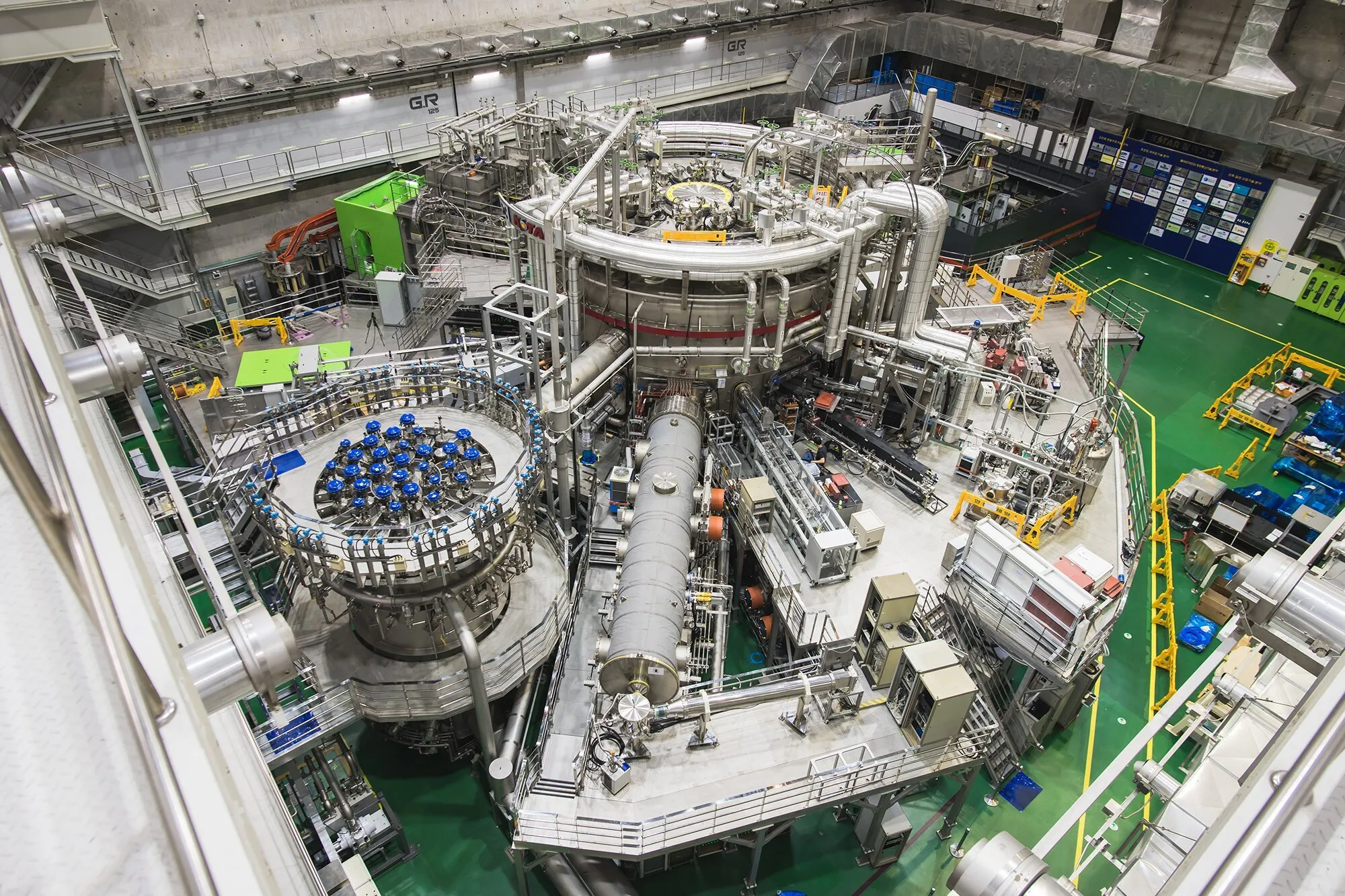South Korea’s bold $863.7 Million Fusion Investment to Ensure Energy Leadership
South Korea made a significant stride in its quest for energy leadership by announcing an investment of KRW 1.2 trillion ($863.7 million) into the development of nuclear fusion technology last month.
This bold initiative, unveiled during a meeting of the National Nuclear Fusion Committee, marks a pivotal moment in the country’s energy strategy. With fusion power often described as the “holy grail” of clean energy, this investment further sets the stage for South Korea to become a key player in the global energy market of the future.

The Korea Superconducting Tokamak Advanced Research (KSTAR) ©National Research Council of Science and Technology.
What Have They Done?
On July 22, 2024, The South Korean government, through its Ministry of Science and ICT, committed to a decade-long program aimed at developing nuclear fusion technologies. This initiative focuses on establishing a public-private partnership (PPP) model and a fusion ecosystem led by the private sector.
The investment is separate from the funds already allocated to ongoing projects like the Korea Superconducting Tokamak Advanced Research (KSTAR) and the International Thermonuclear Experimental Reactor (ITER). Instead, it will support the development of integral fusion reactor components, and promote “an ecosystem for fusion energy together with the private sector, universities and research institutes” according to Oh Yeong-Kook, president of the Korea Institute of Fusion Energy.
The government stated it’s desire to build a 100MW pilot fusion device in the 2030s, aiming for operations in the 2040s.
Why Is It Impressive?
This investment is impressive as it represents one of the largest government commitments to fusion energy development globally, positioning South Korea alongside other major players like the United States, the United Kingdom, and China. The country’s existing expertise with KSTAR provides a strong foundation for these new endeavours. KSTAR has already achieved significant milestones, such as recently sustaining
a world record-breaking 100 million degree plasma for 48 seconds.
An investment of this magnitude reaffirms South Korea’s confidence in Fusion energy and highlights the country's determination to forge new and innovative pathways to bring fusion forward.
Why Is It Important?
South Korea’s commitment to developing fusion technology is strategically significant and forward thinking. As Minister of Science Lee Jong-ho pointed out, the country that masters fusion energy will likely dominate the future global energy market. This is particularly crucial as energy security becomes a growing concern for nations worldwide. By investing heavily now, South Korea aims to secure a leadership position in this next-generation energy source, potentially giving it a substantial economic and geopolitical advantage in the decades to come.
"Fusion power can be a solution to the rising concerns surrounding energy and greater electricity demand, and in the future, only the country with fusion power technology will be able to lead the global energy market," said Science Minister Lee Jong-ho.
Moreover, the decision to establish a PPP model is critical. The fusion energy sector requires vast amounts of capital and expertise, and by fostering collaboration between public research institutions and private companies, South Korea is creating an ecosystem that encourages innovation and accelerates the commercialisation process.
There is already movement on fusion within Korean industry. Last year the start-up Enable Fusion announced their mission to "bring clean, safe, and sustainable fusion energy as a digitally-driven platform for innovative fusion engineering and industrial solutions.” Building on the industrial participation into KSTAR and ITER, Enable Fusion is developing a Fusion Supply Chain Platform to bring together fusion developers with those who can manufacture and deliver crucial component and systems.
The educational component of the recent government announcement is also noteworthy. By expanding fusion-related programs in universities and attracting international talent, South Korea is not only building a robust pipeline of skilled professionals but also ensuring that the country remains at the forefront of fusion research and development. This long-term vision is essential for sustaining growth and maintaining a competitive edge in the global race for fusion energy.
What's Next?
Looking ahead, South Korea’s fusion energy development program is set to enter a critical phase starting in 2026. The immediate goal is to create a pilot fusion device with a generation capacity of 100 megawatts by the 2030s, with operational deployment targeted for the 2040s.
